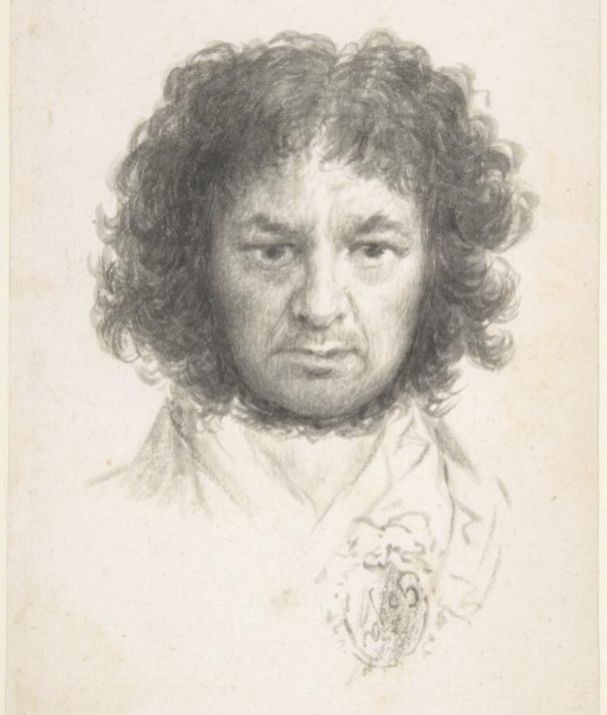- Anniversary. 200 years of the Prado: museum and place of life
- Symbol.The bicentenary of the Prado Museum, protagonist of Google doodle
- Arte.Ada information about the Prado Museum in ELMUNDO.es
- Warehouse.The hidden Madrid of the Prado Museum
On November 19, 1819 opened the Prado Museum with funds from the royal collections. It was Friday. Francisco de Goya y Lucientes (Fuendetodos, 1746-Bordeaux, 1828) had acquired in February of that year the Quinta del Sordo, a small house near the bank of the Manzanares. In summer he began to paint on the walls the murals that are known as Black Paintings . The Prado opened when he already had some of the 14 paintings and in the room that gave access to the central gallery of the museum hung three other works of his: the two equestrian portraits of Carlos IV and María Luisa de Parma and El garrochista . From the beginning the artist and the art gallery were linked.
The Prado today brings together the largest collection of the painter, with 150 paintings, 500 drawings and correspondence with his friend Martín Zapater. Goya is the most represented of the Spanish artists. And in that time of 1819, the most visceral. That picture of swings and games of field, of prairies, pestles in gallant and sweet harvests, were already a crushed idealization of those years in which the Enlightenment could be more than a principle of progress. Fierce Spain had won the site, crushing any possible dream.
Goya went along with that dark time and changed the motive of his drawings (mainly his drawings) leaving a trace of how a spirit of ethics and freedom had been transformed into the image of men crushing themselves with sticks. Goya's roles are the story board of a betrayed era, but also the movement of a way of understanding art, from the reproductions of youth (1772-94) of etchings of Velázquez's works to the Cuaderno de Sanlúcar (1794- 95), with some drawings related to the portrait of the Duchess of Alba in white (1795), until she reached the Disasters of War (1810-15) and Bullfighting (1814-16). Also the last papers he worked in the final years, when old age and deafness had disconnected him from the world .
Self-portrait of Francisco de Goya.
The Prado Museum brings together 300 of these pieces in a powerful exhibition: Only I will spare , of which José Manuel Matilla and Manuela Mena are curators, in collaboration with the Botín Foundation, and open until February 16, 2020. violence, the critical incision, the terrible dentellada were populating the drawings of Goya, where he deployed a galaxy of crippled, old, witches, hanged men, donkeys with frocks and hoods of the Inquisition. "Fantasy, isolated from reason, only produces impossible monsters . Together with it, instead, it is the mother of art and the source of its desires," he wrote in one of the letters to Martín Zapater.
As man has not changed since man, Goya's drawing (etching, pencil, blood, gouache ...) remains a colloquium with the present. The sinister, the vulgar, the incalculable, the corruption and the cavernous mood maintain their momentum, otherwise, but it is. Also the everlasting violence of all against all: " I do not think there is another contemporary artist that addresses violence against women or social inequalities as Goya did 200 years ago." Miguel Falomir, director of the Prado says it.
Goya is deep, contemporary, corrosive. His visions and nightmares serve to illuminate ours. And through the papers, 300 together, another profile of the painter is sighted: "That of a thinker who brings to light everything that is hidden under the carpets of society," explains Matilla. He is a political artist who does not dodge the vicissitudes of his time and is able to paint a delicate lace on the same afternoon that he makes a drawing where a guy feeds his own head recently decapitated. That is a way of reporting and a form of resistance .
The titles of some of these pieces are also the key to an alert spirit: Great nonsense , Another on the same night , Sad premonitions of what will happen , Nobody knows ... The exhibition ends its journey with an extraordinary role, I still learn , about the ability to progress. In many of them there is paranoia, but also the extreme beauty of those who set out not to live with their legs buried and made their work a tremendous message. Until the entrails.
According to the criteria of The Trust Project
Know more- culture
- art
- Painting
- history
Art Van Gogh's sister-in-law saved him from oblivion: he managed to sell 192 paintings and dedicated his life to spreading his work
Art All the secrets of Leonardo da Vinci in the biggest exhibition of the year
Culture They take their place at the Prado Museum

